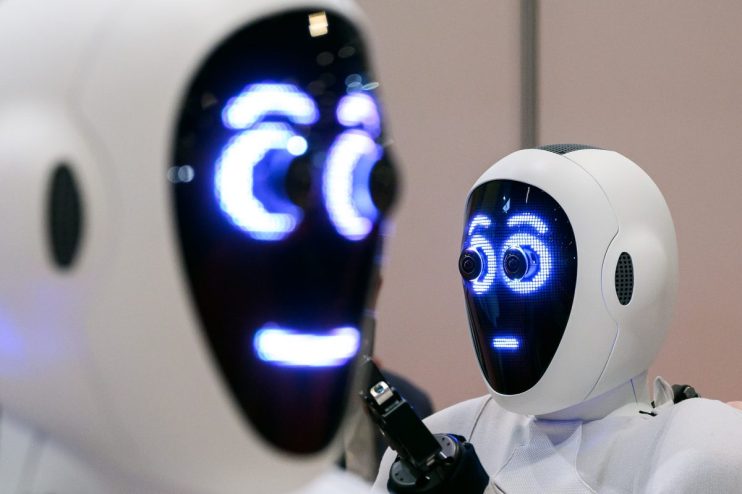
Black Mirror may feel close to reality, but the reality of the AI revolution should give us more optimism, writes Naji El-Afiri
The new season of Black Mirror is upon us, premiering this month to a mixture of trepidation and excitement. Between Neuralink, agentic AI and now finding digital immortality in your consciousness being uploaded to the cloud, it can so often feel that Black Mirror is less about the future, than it is a lens into the present tech landscape – and our human responses.
Have we, as a society, now hit the inflection point of Black Mirror, where the fiction meets the facts?
AI is expanding creativity
One Black Mirror staple is the fear that technology will replace human creativity. And long been true that science fiction doesn’t just reflect the future – it shapes it. From the Humane AI Pin that echoes the iconic Starfleet badge, to brain interfaces that are being prototyped by Neuralink, echoing the digital mind transfers seen in Black Mirror episodes like “San Junipero” and “Black Museum.” fiction is reality, and it can seem scary.
However, rather than seeing this convergence as cause for concern, we should be approaching it with curiosity.
While facial recognition and predictive algorithms may make us think of Minority Report, they can also be a tool to democratise access to information. At my company, for example, we have implemented deepfake technologies for clients, allowing them to deliver internal training in any language across the business.
Furthermore, AI tools like Midjourney unlock new creative potential, opening doors to wider participation and upskilling entire workforces. Today, anyone can create a beat, design a logo or script a short film. Meanwhile, we’re witnessing the rise of the “curator economy” – a space where creativity becomes more about taste, direction and storytelling than technical skill alone.
This shift doesn’t mean the death of creativity, but a redefinition of what it means to be creative. In a world where everyone can create, the role of the tastemaker – the one who sees meaning and pulls it together – becomes more vital than ever.
Offices are more human-centred than ever
Take a look at where we work. In 2025, the “office” is undergoing a glow-up. While Black Mirror often portrays tech dystopias unfolding in sterile, isolating environments, today’s workspaces are rejecting that future.
Across the globe, from Hangzhou to New Jersey, we’re seeing a reinvention of the office as centred around humans, not tech. Wellness-first campuses, green spaces and curated communal hubs are turning the 9-to-5 into something more alive. It’s a response not to the fantasy of tech, but to the real need for human rhythm in digital times.
These spaces reflect a deeper shift. 93 per cent of people globally believe businesses should play a bigger role in supporting their health and wellbeing. The new office doesn’t just accommodate work – it elevates it to be a place where life happens.
It’s not about escapism. It’s about building environments that respect human rhythms, inspire connection and invite creativity.
IRL connection continues to triumph
This optimism extends beyond tech and workspaces. It’s reshaping how we connect – with each other, and with ourselves.
The novelty of dating apps may be fading – just 22 per cent of daters used them last year – but in its place, a richer tapestry of connection is emerging. From IRL meetups to social hobby groups, younger generations are looking for more grounded, human ways to meet and mingle.
Gaming is another vanguard of culture. While the ‘metaverse’ may feel like an overplayed buzzword, the reality is 54 per cent of consumers want to buy real-world versions of items they see in games, and 55 per cent say their digital appearance matters as much as how they look in real life. Gaming isn’t just a pastime, but increasingly a testing ground for commerce, identity and selfhood.
It reflects a broader cultural reset: a desire for experiences that feel spontaneous, intentional and rooted in community. We’re seeking out new rituals – not to replace tech, but to balance it with our day-to-day life.
What’s next?
Yes, ultimately, we’re living in a world that can sometimes feel like Black Mirror – but perhaps not the one the show warned us about. The difference? We’re not passive characters.
The tools are powerful, yes. But so is our intention.
We’ve reached a point where some technologies rival those imagined in science fiction – from self-driving taxis to smartphones that put all of human knowledge at your fingertips. If you pause to reflect, it’s truly an extraordinary time to be alive, surrounded by innovations that were once considered impossible.
So the question isn’t “have fiction and reality blurred?” – they have. The real question is: what kind of future do we want to author next?
The mirror is here. Let’s make sure we like what we see in it.
Naji El-Afiri is director of Marcomms Innovation at VML








